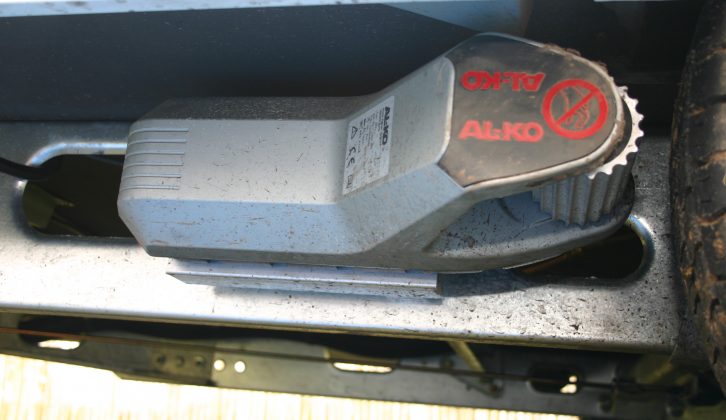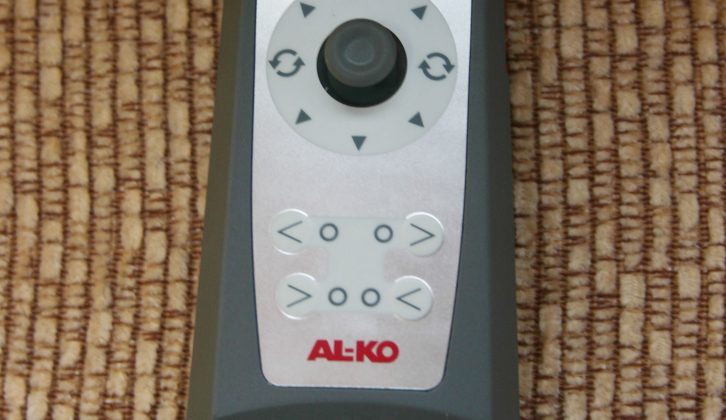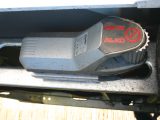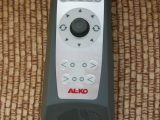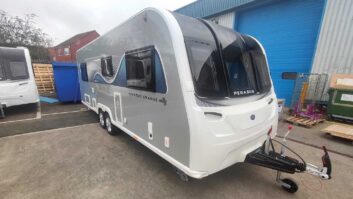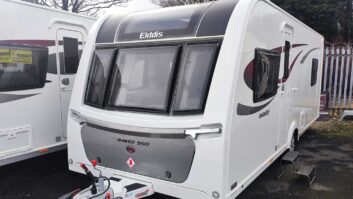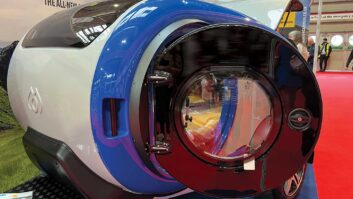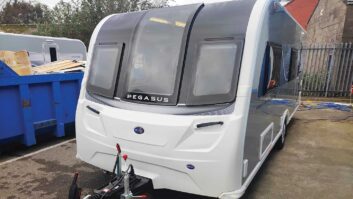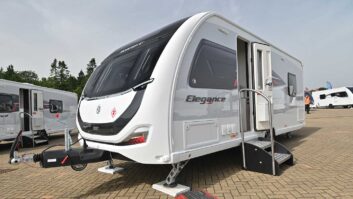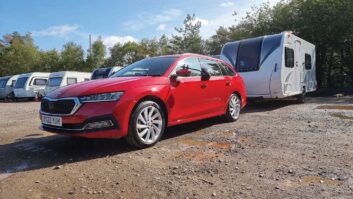The original caravan mover was launched by Carver back in 1997. Since then around nine more companies have entered the field but AL-KO Kober – who actually make the chassis for the majority of British caravans – wasn’t one of them. Until now. At October 2009’s NEC caravan show the public was given a preview of the company’s Mammut mover, with the official launch being held at the recent February show. The 13-year wait has been well worth it because in the Mammut – the word means elephant in German – AL-KO has produced a superbly engineered mover.
Not the least of its features is the fact that the unit fits within the height of the chassis member; hence unlike other movers, there is no loss of ground clearance. The Mammut is also beautifully styled and again, unlike the competition, it is designed to be bolted to all 2010 chassis using pre-punched holes, these chassis being identified by the embossed letter M. It can also be retrofitted on both AL-KO and non-AL-KO chassis on existing caravans which do not have the fitting holes. In these cases, the drive units clamp to the chassis in the same position, but the crossmember linking the drive units reduces the clearance below the caravan by 50mm. There is also an increase in weight of the Mammut from 29kg to 36kg.
Just after February 2010’s NEC show, we got hold of a Lunar Lexon 570 which had the Mammut fitted to it, and having had a chance to use it, we have to report that we were very impressed. That said, however, we did have one or two minor reservations.
The unit fits in front of the wheels and has been designed so that it clears the shock absorbers if fitted. Currently at any rate, it can’t be fitted behind the wheel as it would prevent the use of the AL-KO side jack; we also suspect that it might obstruct the under-floor spare wheel carrier.
The control unit is unique in that all the movements – forward, backward, turning – are activated by a joystick. Having switched the unit on, it goes though a self-checking procedure during which LEDs covering state of the drive and remote control batteries light up. Importantly too, there are also LEDs covering maximum climbing ability and the maximum drive temperature, as well as ones which indicate the positions of the two mover units during manoeuvring.
After switching on and going through the self-check, the unit trumpets like an elephant to indicate that it is operative. You then need to hold it against an enabling switch on the overrun device fitted to the caravan’s A-frame. This is where we had a problem because the instructions said: “…move the remote control over the enabling switch on the overrun device.” We did this and nothing happened. We then found out that this was because there is a small cut-out on the back of the unit which needs to be in contact with the switch on the A-frame for the system to begin operating. Once this happened the Mammut worked perfectly with both drive rollers engaging and disengaging faultlessly and all motions taking place steplessly through 360 degrees.
However, we did have one other reservation, although one which – once you realise how the layout of the various symbols is orientated – isn’t a problem. The layout has the icon of the A-frame at the top of the control. Hence when you push the joystick towards the 12 o’clock position, instead of the caravan moving away from you, it actually moves towards you; or when the joystick is at the 6 o’clock position, the caravan moves away from you. Once we realised this we had no further problems and we were impressed by the way the caravan moved smoothly to the right and left and could even be turned through 180 degrees on its own axis.
The Mammut is designed to move single-axle caravans with a maximum MTPLM of 2250kg. At this weight the unit will drive the caravan up a 12% slope. For caravans having a MTPLM of 1800kg it is 15% and for caravans of 1200kg the figure rises to 28%. Whatever the MTPLM, AL-KO recommends a semi-traction battery of 80Ah which the company claims will last for up to two hours on level ground or 30 minutes under full load, providing the battery is fully charged. The unit has aluminium drive rollers which propel the caravan at approximately 0.5km/h. Soft start is standard and the drive rollers can be disengaged manually if necessary. Additionally, the housings are splash- and water-resistant and hence much easier to keep clean than some of the other units on the market.
So what’s the cost? Well, the Mammut ain’t the cheapest on the market by a long way! When supplied fitted to the latest AL-KO chassis, it costs £1,498.13 including VAT and fitting. When supplied for retro-fitting on pre-2010 chassis, it will be £1,615.63 – again including VAT and fitting. The warranty period is two years.
Having tried it, do we think the Mammut worth the money? Yes we do, because the combination of no loss of ground clearance, stepless steering through 360 degrees and the styling, we believe, make it the Rolls Royce of caravan movers, and Rolls Royces never come cheap!
Currently there isn’t a model available for twin-axle caravans although we understand one is in development and will be launched in the not-too-distant future.
